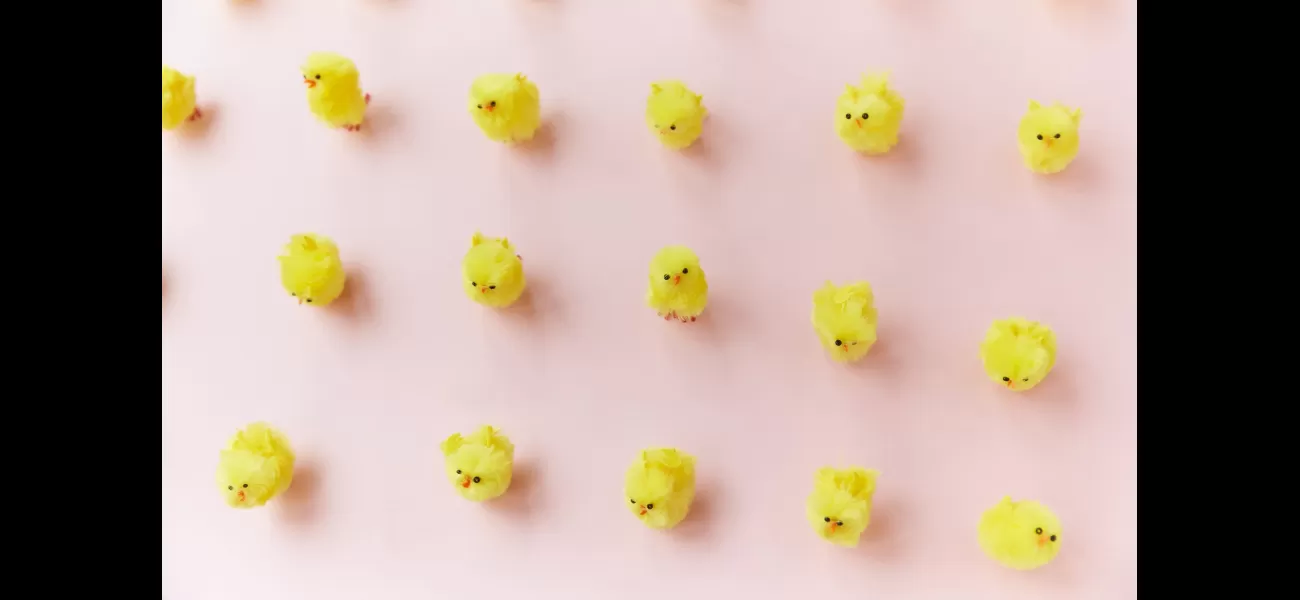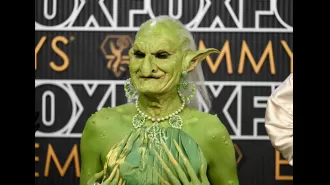Easter is turning into another Halloween, which is concerning.
The Easter Bunny has a huge carbon footprint.
March 31st 2024.

Easter is not typically associated with environmentalism, but I urge you to take a moment and consider the impact our actions have on the planet. As I look around Britain today, it almost feels like we've fast-forwarded to October. And no, I'm not just talking about the gloomy weather. I'm referring to the massive surge in plastic purchases that are used for a few days, only to end up in a landfill shortly after. It seems that Easter is slowly becoming the new Halloween, and the consequences of this trend are concerning. If we continue on this path of excessive consumerism, we will be celebrating the arrival of spring by harming our natural world.
Just in the past decade, the UK's spending on Halloween has quadrupled, reaching a staggering £1 billion. A recent survey by charity Hubbub revealed that seven million Halloween costumes are thrown away every year, leading to 2,000 tonnes of plastic waste. That's equivalent to 83 million plastic bottles! Unfortunately, we are now seeing a similar trend with Easter, where spending is expected to almost double since last year. We are already familiar with the waste that comes with Halloween, but this rise may not come as a surprise given that children love chocolate and the cost of everything is constantly increasing. However, did you know that only half of the expected £2 billion spent on Easter this year will go towards purchasing eggs? Home baking, decorations, and DIY promotions are also driving up our expenses during this holiday.
You may think that these activities are harmless, but my message is simple – please refrain from buying unnecessary plastic products to celebrate Easter, or any other year for that matter. Plastic pollution is a major threat to our world, and it's frightening to think that plastic waste is predicted to triple by 2060. So, while you may not typically associate Easter with environmentalism, I urge you to take a moment and think about the planet before falling for marketing tactics. Instead of buying cheap decorations, consider purchasing Fairtrade chocolate eggs with simple cardboard packaging for your loved ones.
From scrolling through Instagram to walking past shop window displays, it's evident that the focus of Easter has shifted from its original meaning to indulging in confectionery and extravagant decorations. When I was growing up, Easter was all about attending church and enduring long services in anticipation of finally being able to enjoy chocolate eggs and sweets after giving them up for Lent. However, now, it seems like every supermarket and home store is filled with plastic Easter trinkets. Upon reading the labels, it's apparent that most of these items are mass-produced in Asia, shipped thousands of miles, and end up in our homes for a week before being tossed into a landfill. The carbon footprint of the Easter bunny is enormous. I mean, who needs battery-operated rabbit garden lights or plastic carrot platters? And let's not forget about the mysterious "Easter Gnomes."
While my main concern is with the excessive use of cheap plastic, there are also plenty of options for those looking to indulge in luxury items. For instance, you can purchase a rose gold-tone plated Easter egg-shaped silver cutlery set from the posh department store, Harrods, for a mere £2,500. Now, you may think that I'm just poking fun at these expensive decorations and cutlery, but there is a cost to all of this, and it goes beyond just the financial aspect. Most plastics are made from fossil fuels, and even though we are becoming better at separating our rubbish, a significant amount of plastic still cannot be recycled. According to The Big Plastic Count, only 12% of plastic is recycled in the UK. A quarter of it ends up in landfills, while almost half is incinerated, which can have adverse effects on air quality and public health.
I don't want to dampen your spirits, but climate change is real, and pollution is a serious problem that we need to address. None of us intentionally sets out to fill our homes with unnecessary plastic, but that's exactly what retailers hope we will do. The amount of plastic used during Easter is concerning, and if we want to combat carbon pollution, reduce costs, and enjoy the simple pleasures of life, then I can assure you that an Easter wreath made out of plastic is not the answer. I understand that we all want to have a beautifully decorated home, and I'm no exception. However, there are ways to make things festive without harming the planet. For example, you can paint boiled eggs, cut out cardboard bunny shapes and have the kids decorate them, or pick tulips and daffodils from your garden to brighten up your living room. If you're really set on having a wreath, you can make your own using blossoms that can be found in any wood during this time of year. And don't forget to look for sustainable chocolate options with minimal packaging.
Easter weekend should be a time to celebrate rebirth, renewal, and spring, but instead, we are contributing to the choking of our planet. I understand that times have changed, but I highly doubt that the pagans who started the ritual of marking the spring equinox or the Christians who celebrate Holy Week had maxing out our credit cards on fake fur bunny ears in mind. So, enjoy Easter, enjoy the eggs, but if we are serious about saving the planet, we need to put a stop to this holiday becoming the new Halloween before things get even scarier. Do you have a story you'd like to share? I'd love to hear from you, please email me at jess.email. And don't forget to share your views in the comments below.
Just in the past decade, the UK's spending on Halloween has quadrupled, reaching a staggering £1 billion. A recent survey by charity Hubbub revealed that seven million Halloween costumes are thrown away every year, leading to 2,000 tonnes of plastic waste. That's equivalent to 83 million plastic bottles! Unfortunately, we are now seeing a similar trend with Easter, where spending is expected to almost double since last year. We are already familiar with the waste that comes with Halloween, but this rise may not come as a surprise given that children love chocolate and the cost of everything is constantly increasing. However, did you know that only half of the expected £2 billion spent on Easter this year will go towards purchasing eggs? Home baking, decorations, and DIY promotions are also driving up our expenses during this holiday.
You may think that these activities are harmless, but my message is simple – please refrain from buying unnecessary plastic products to celebrate Easter, or any other year for that matter. Plastic pollution is a major threat to our world, and it's frightening to think that plastic waste is predicted to triple by 2060. So, while you may not typically associate Easter with environmentalism, I urge you to take a moment and think about the planet before falling for marketing tactics. Instead of buying cheap decorations, consider purchasing Fairtrade chocolate eggs with simple cardboard packaging for your loved ones.
From scrolling through Instagram to walking past shop window displays, it's evident that the focus of Easter has shifted from its original meaning to indulging in confectionery and extravagant decorations. When I was growing up, Easter was all about attending church and enduring long services in anticipation of finally being able to enjoy chocolate eggs and sweets after giving them up for Lent. However, now, it seems like every supermarket and home store is filled with plastic Easter trinkets. Upon reading the labels, it's apparent that most of these items are mass-produced in Asia, shipped thousands of miles, and end up in our homes for a week before being tossed into a landfill. The carbon footprint of the Easter bunny is enormous. I mean, who needs battery-operated rabbit garden lights or plastic carrot platters? And let's not forget about the mysterious "Easter Gnomes."
While my main concern is with the excessive use of cheap plastic, there are also plenty of options for those looking to indulge in luxury items. For instance, you can purchase a rose gold-tone plated Easter egg-shaped silver cutlery set from the posh department store, Harrods, for a mere £2,500. Now, you may think that I'm just poking fun at these expensive decorations and cutlery, but there is a cost to all of this, and it goes beyond just the financial aspect. Most plastics are made from fossil fuels, and even though we are becoming better at separating our rubbish, a significant amount of plastic still cannot be recycled. According to The Big Plastic Count, only 12% of plastic is recycled in the UK. A quarter of it ends up in landfills, while almost half is incinerated, which can have adverse effects on air quality and public health.
I don't want to dampen your spirits, but climate change is real, and pollution is a serious problem that we need to address. None of us intentionally sets out to fill our homes with unnecessary plastic, but that's exactly what retailers hope we will do. The amount of plastic used during Easter is concerning, and if we want to combat carbon pollution, reduce costs, and enjoy the simple pleasures of life, then I can assure you that an Easter wreath made out of plastic is not the answer. I understand that we all want to have a beautifully decorated home, and I'm no exception. However, there are ways to make things festive without harming the planet. For example, you can paint boiled eggs, cut out cardboard bunny shapes and have the kids decorate them, or pick tulips and daffodils from your garden to brighten up your living room. If you're really set on having a wreath, you can make your own using blossoms that can be found in any wood during this time of year. And don't forget to look for sustainable chocolate options with minimal packaging.
Easter weekend should be a time to celebrate rebirth, renewal, and spring, but instead, we are contributing to the choking of our planet. I understand that times have changed, but I highly doubt that the pagans who started the ritual of marking the spring equinox or the Christians who celebrate Holy Week had maxing out our credit cards on fake fur bunny ears in mind. So, enjoy Easter, enjoy the eggs, but if we are serious about saving the planet, we need to put a stop to this holiday becoming the new Halloween before things get even scarier. Do you have a story you'd like to share? I'd love to hear from you, please email me at jess.email. And don't forget to share your views in the comments below.
[This article has been trending online recently and has been generated with AI. Your feed is customized.]
[Generative AI is experimental.]
0
0
Submit Comment





